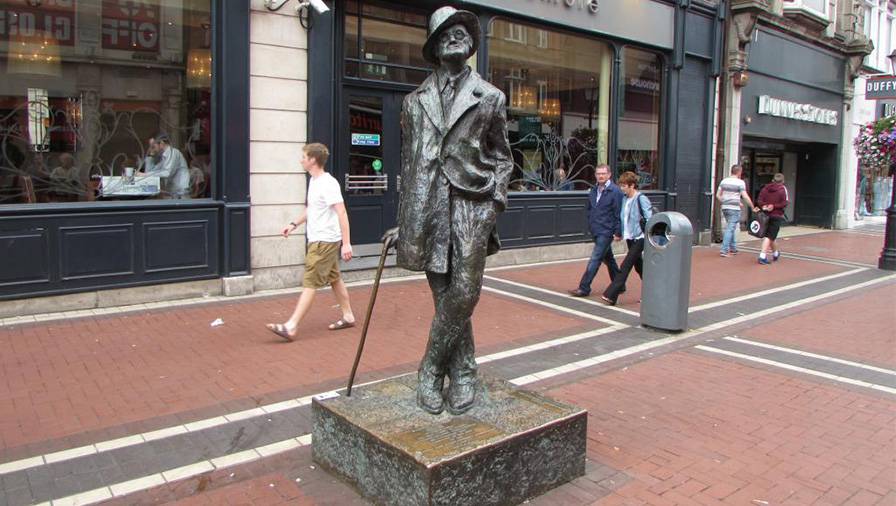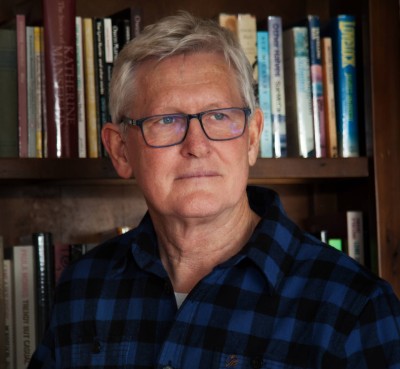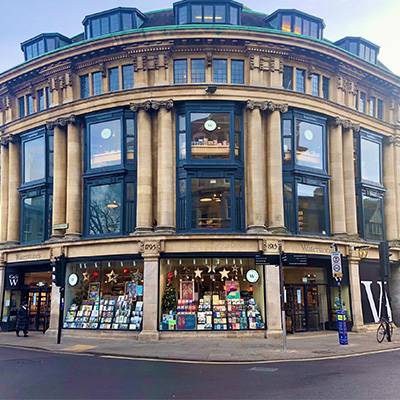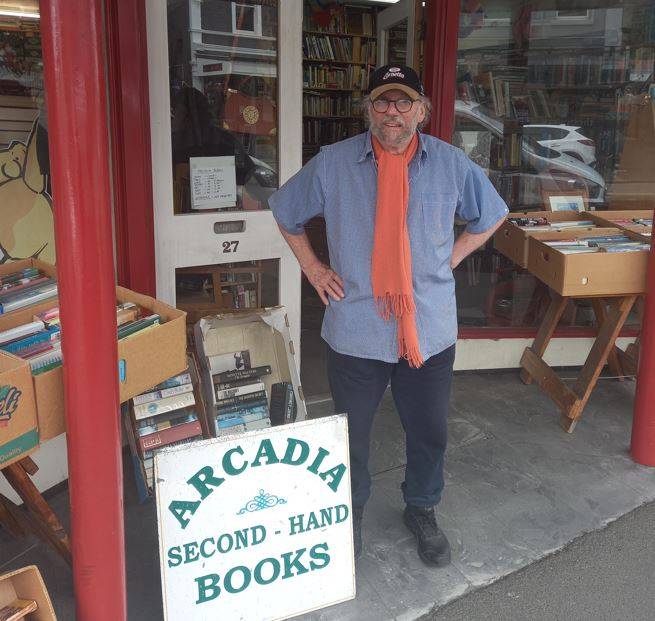

Adventures in bookland: From paperbacks to first editions
ANALYSIS: Dunedin collector Tony Eyre looks back on a life with literature.
WATCH: NBR columnist Nevil Gibson speaks with Calida Stuart-Menteath.


ANALYSIS: Dunedin collector Tony Eyre looks back on a life with literature.
WATCH: NBR columnist Nevil Gibson speaks with Calida Stuart-Menteath.
Allen Lane Williams, with his brothers Richard and John Lane, are credited with the invention of the paperback to make books more affordable. The surname Williams was dropped in favour of Allen’s mother’s birth surname to keep her brother John Lane’s Bodley Head publishing company as a family business after his death in 1925.
Penguin Books was founded 10 years later, launching a business phenomenon that, at the time, was opposed by authors and publishers.
Allen Lane pursued his mission of cheap literacy with a stubbornness that the greater the obstacle, the more effort he made to overcome it. “He thrived in an atmosphere of crisis and came most fully alive under the challenge of great dilemmas,” was how Gordon B. Neavill described him in the Library Quarterly in 1981.

A statue of James Joyce in central Dublin.
Apart from the paperbacks, Lane also achieved notoriety for publishing the first authorised English edition of James Joyce’s Ulysses in 1936, 14 years after its first appearance in Paris and London in limited but error-ridden editions. The Bodley Head version was later reset and corrected in 1960, becoming the standard for later editions by other publishers.
In 2010, Dunedin book collector Tony Eyre spent a day, as many travellers do in Dublin, following Joyce’s literary trail. Eyre bought a cheap copy of Ulysses, sat down by the River Liffey, and began to read about a day in the life of Stephen Dedalus and Leopold Bloom on June 16, 1904.

Tony Eyre, the Dunedin book collector.
Eyre’s spot of quiet reading was soon disturbed by a bare-chested, tattooed British hooligan jumping from the Liffey bridge. “Ulysses is hard enough to read without this sort of distraction," Eyre dryly observed. His peace was further shattered as the Garda, fire brigade, and ambulance turned up for a rescue watched by an ever-increasing crowd.
Soon after that drama, of a man being handcuffed and taken off in a paddy wagon, the Garda returned to manhandle two Eastern European bench-sleepers, removing them also in handcuffs with “brutal efficiency”. Eyre further noted: “Maybe it wasn’t the best time to sample one of the greats of Irish literature.”
The anecdote is one of many in Eyre’s ‘bibliomemoir’, The Book Collector, about a life’s interest in reading and collecting books. Eyre was born in the 1950s, grew up as a Catholic schoolboy in Auckland and, in 1978, moved to Dunedin to spend a career as an accountant.
He became a keen champion of that city’s literary heritage and amassed a large library of mainly New Zealand fiction first editions. His interest was sparked by Dan Davin, the Invercargill-born writer of Irish working class origins.
Davin, like other contemporary New Zealand writers immediately before and after World War II – such as James Courage and John Mulgan – faced the dilemma of reconciling their overseas experience with the New Zealand environment.
Patrick Evans wrote in his 1990 Penguin History of New Zealand Literature: “It is the problem of the provincial, fed on cosmopolitan literature, but surrounded by a reality that seems hostile to art.”
Eyre does not attempt to write a literary study, or even comment on the major themes; he is more interested in the actual products – the combined work of not just authors but also of editors, designers, printers, publicists and, of course, those who sell them.

Waterstones bookshop in the book-rich university city of Oxford.
It is the latter that fill most of the 20 chapters, as Eyre describes visits to more than 50 second-hand bookshops here and overseas in search of additions to his library. He is not an antiquarian collector and finds most delight in one of Allen Lane’s first edition Penguins by the likes of Graham Greene.
Paperbacks became a staple for any book buyer from the 1950s, once the wartime paper restrictions in the UK were lifted. I recently bought some that remain in good condition despite being more than 70 years old.
I paid a few dollars for a DH Lawrence title published in 1950 and priced on the cover at 1/6. I calculated, I hope correctly, that the inflation-adjusted cost of 18 pence would be some £7.75 in today’s money, or NZ$15 today.
If that is the case, then the book industry, as Allen Lane found in the 1930s, is missing out on a larger market by over pricing its most common product of new fiction at $40 for large format trade paperbacks. This ignores the role of the smaller paperbacks that, in Eyre’s view, have since become collectors’ items.
The thrill of the chase for bargains infuses Eyre’s enthusiasm, whether it’s large book sales such as the Regent Theatre’s 24-hour event in Dunedin or the concentration of shops in small towns such as Featherston. Among his most rewarding visits were to rural Australia, where many New Zealand-born writers achieved fame; the book-rich university city of Oxford, where Davin headed the OUP; and the capital of English book publishing, London.
Most, if not all, of New Zealand’s best-known second-hand bookstores are included, some accompanied by photographs. Unfortunately, the lack of an index makes it hard to keep track of these establishments, not to mention the wealth of recommended authors and titles, after the book has been read.
Eyre knows the value of original hardbacks, which are worth more with their cover jackets, but is reluctant to enter the world where collectors pay the over-the-top prices. Instead, he prefers to go down some interesting rabbit holes in search of books with family connections or favoured topics such as seafaring, horseracing, or New Zealand history.

Jim Vannisselroy at his bookshop inPort Chalmers.
A visit to Northland, for example, was spurred by Jane Mander’s The Story of a New Zealand River (1920), which inspired Jane Campion’s award-winning film The Piano. (Eyre has the 1938 first New Zealand edition.)
This led him to discover other Kaipara-based writers such as William Satchell and Amelia Batistich. A family connection to a constable shot by Stanley Graham, the first New Zealand mass murderer, provides another excursion, as does the World War I memoir of Dunedin-born mathematician Alexander Aitken, who had a photographic memory and later became an academic in Edinburgh.
Eyre’s wife Yvonne Fogarty was a New Zealand table tennis champion in her youth and among the first Westerners to visit Mao’s China when that sport became a tool of diplomacy. This enabled the Eyres to tour China in 2014 and have the opportunity to check out its admittedly limited literary legacy under communism.
As befits a book intended for lovers of literature, this is one of the best hardback productions I have seen from a local publisher. That is due to Mary Egan, onetime type and book designer for Penguin’s big output of New Zealand fiction in the 1990s and now a publisher in her own right. The cover, featuring well-read hardback copies of some of this country’s best fiction, is by Anna Egan-Reid.

The Book Collector: Reading and living with literature, by Tony Eyre (Mary Egan Publishing).
Nevil Gibson is a former editor at large for NBR. He has contributed film and book reviews to various publications.
This is supplied content and not paid for by NBR.
Sign up to get the latest stories and insights delivered to your inbox – free, every day.